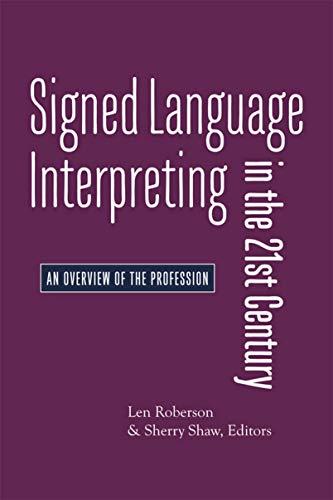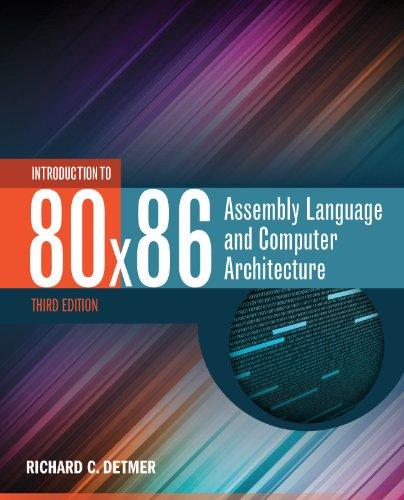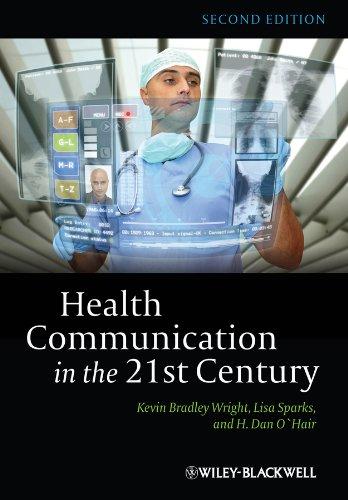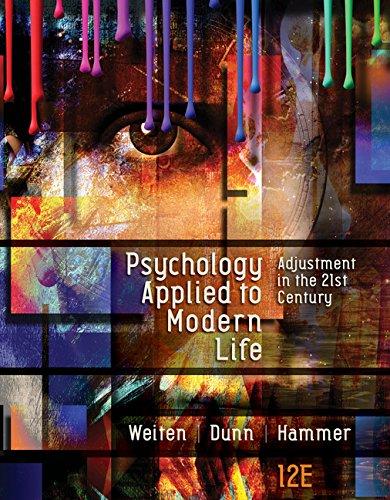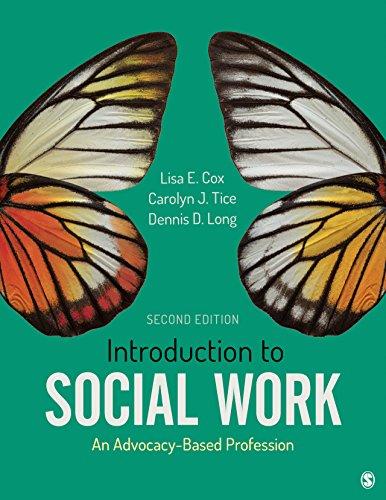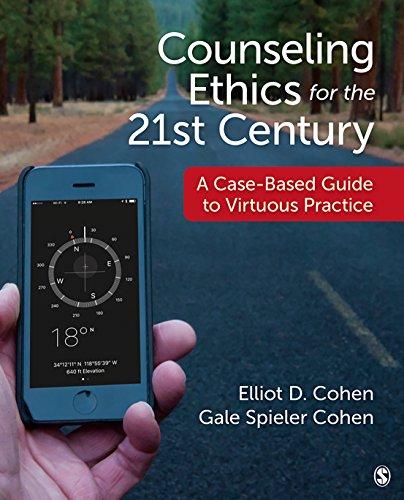1 Interpreting: An Overview
LEN ROBERSON
Defining Terms: What Is It We Do?
An interpreter conveys what is said or signed in one language into another language while maintaining the original intended message. Interpreting allows two or more individuals who do not share a common language to engage in a communicative interaction through a person who is bilingual. Signed language interpreters render “a spoken or signed source language message into a spoken or signed target language in real time” (International Organization for Standardization, 2014, p. 1).
Within the field of signed language interpretation, interpreters not only work between two or more languages, but also between different forms of the same language. This process, working between different forms of the same language, is referred to as transliterating. According to Winston (1989), transliterating is “a specific form of sign language interpreting.” It is the process of changing one form of an English message, either spoken English or signed English, into the other form. Translation, although often confused with interpreting, is a unique, albeit closely related, linguistic discipline. Translation is the process of converting a message in one printed language to the same message in another printed language while retaining all of the original meaning. Translators, like interpreters, work to not only maintain the integrity of the message itself, but also to include cultural understanding in the translation. There are times when signed language interpreters perform a similar task known as sight translation, working from a printed text into sign language. For example, an interpreter may have to translate an intake document in a doctor’s office for a Deaf consumer who
Len Roberson
prefers to have the form signed. In essence, the key difference between these two linguistic processes is in the medium of the work; translation involves a written text, whereas interpreting occurs between spoken and/ or signed languages.
Service Delivery
Interpreting can be done in a number of ways, but it is typically accomplished either in person or via some form of technology. In-person interpreting is by far the more common method of interpreting and certainly, for many Deaf and hard of hearing individuals, the preferred method. However, recent advances in technology have created opportunities for interpreting to occur without the physical presence of an interpreter. For the field of sign language interpreting, this is a rather new occurrence. The availability of high-definition video technology allows interpreters to be in one location while the individuals who are communicating are in two different locations. Although interpreting services using technology are constantly improving and serve a general purpose for non-urgent interpreting, there is still a need for research on the effectiveness of technology-based interpreting in the areas of high-risk interpreting (e.g., medical and legal interpreting). Although many deaf and hard of hearing individuals enjoy the use of technology-based interpreting for everyday tasks, such as calling a friend, ordering a meal, or making an appointment, these same individuals often prefer a live interpreter to be present with them during other interpreted events.
In-Person Interpreting
Interpreters who work in a live setting have direct and in-person access to all parties engaged in communication. Often, this means managing the physical space and environment as well as the discourse exchange between speakers. For example, when interpreting in person, an interpreter is often the individual who ensures the arrangement of all parties in the room is supportive of full and equal access to all as well the general management of such environmental factors as lighting, seating, and audio/visual materials. Interpreters working in a live setting have an easier time with turn-taking,
the volume of the spoken message, and visual access to extra items and people present that may not be easily accessible via technology.
Signed language interpreters work as independent (freelance) contractors, or as staff interpreters. Independent contractors provide their services to many different people. They can obtain jobs through a signed language interpreting agency or by contracting directly with companies and people in need of interpreting services. These interpreters work on a fee-for-service basis, and they are paid by the hour or by the day or week. They can work for more than one company or person at a time, but they are not employees of any one agency or company; they are self-employed. As such, they are responsible for paying taxes on a quarterly schedule.
Staff interpreters are salaried workers in an organization, and they provide interpreting services for employees, visitors, or customers. Many businesses, organizations, and agencies (e.g., K–12 and postsecondary school systems, government agencies, hospitals, state and federal court systems, and private corporations) hire full-time interpreters. According to AIIC, “career paths of staff interpreters vary widely” with many staff interpreters remaining with a single organization for many years (see International Association of Conference Interpreters, 2011). Staff interpreting positions may include other responsibilities (e.g., managing interpreting services for the organization, administrative support services, providing accessibility consultation and training, etc.), and often build in time to prepare for specific assignments and other duties. Staff interpreter positions are usually salaried, include benefits, and often provide for regular salary increases, opportunities for professional development and training, as well as advancement opportunities. Another benefit of a staff interpreter position is the development of collegial relationships with other employees, both Deaf and hearing.
A staff interpreter may also be a designated interpreter; that is, hired to work alongside a Deaf professional to interpret all of the individual’s interaction with nonsigning individuals (e.g., customers, patients, and coworkers). Designated interpreters have been hired to work with Deaf doctors, lawyers, engineers, real estate agents, artists, educators, and corporate administrators, to name a few. Designated interpreters must have excellent linguistic and interpreting skills, expertise in a particular field or profession, including terminology, and a strong partnership with the
Len Roberson
Deaf professionals with whom they work. The book Deaf Professionals and Designated Interpreters: A New Paradigm is an excellent resource for understanding the work of designated interpreters.
Interpreting via Technology
Interpreting, in a fundamental sense, is about access. From the time the telephone was developed, technology has had a part in providing access. Although deaf people could not use the telephone themselves, they would ask a hearing family member or friend who signed to make the call, so they could engage in conversation with someone. With the advent of telecommunications devices for the deaf (TDDs), deaf people could call each other over the telephone lines and type their conversations. Access to the telephone became more widely available when the Americans with Disabilities Act (ADA) required (see Title IV of the ADA) telephone companies to provide relay services across the United States. The early relay services used a TDD and involved a hearing person, a deaf person, and a communication assistant (interpreter) to relay the messages back and forth. All of the parties involved in the call were in a different location.
New video technologies have made it possible for interpreters to work in one location for an entire shift and to handle calls from many different locations. The newest forms of technology-related interpreting are video remote interpreting (VRI) and video-relay service interpreting (VRS). Both types rely on computers or other similar devices with video capabilities and broadband internet access to connect Deaf and hearing individuals with an interpreter. The interpreter can then facilitate the communication between all parties.
There are fundamental differences between these two services. Videorelay services are provided by companies who specialize in this form of interpreting. The Federal Communications Commission (FCC) reimburses the companies and requires that the parties (the Deaf person, the hearing person, and the signed language interpreter) cannot be in the same location.
VRI services are often used when two of the parties (e.g., the Deaf and hearing person, the Deaf person and the interpreter, or the interpreter and the hearing, nonsigning person) are in the same room. The VRI service provider usually has a contract with the individual or organization
Interpreting: An Overview 5
requesting the interpreting services. Both VRI and VRS allow interpreters to work from remote locations that may be far from the physical location of the assignment. Although this seems to be an excellent solution for access, often the communication may prove to be ineffective due to limitations in bandwidth, difficulty in viewing a multidimensional language on a flat screen, and the challenges of interacting with all parties and the environment via video technologies. VRI may not be the right solution for all situations or all individuals involved, and its use should be carefully considered and the benefits and limitations weighed before using.
Settings General
Signed language interpreters have many opportunities to work in a variety of settings with diverse groups of individuals. Some of these settings require specialized skill sets, training, and experience. This is especially true for educational, medical, and legal interpreting.
Although a list of potential settings can be considered and presented, in reality, an interpreter could work in any situation in which a Deaf person interacts with others who cannot communicate on their own with the Deaf person. This suggests endless possibilities for where an interpreter could work. Such possibilities might include any of the following:
• working as a full-time staff interpreter for a company, corporation, or organization
• health care (i.e., doctor’s office, hospital, surgical center)
• educational (i.e., preschool–12th grade, college, technical school, continuing education)
• legal (i.e., attorney–client meetings, court, mediation, law enforcement)
• conferences and meetings
• social clubs and activities
• vacation and holiday events (i.e., amusement parks, cruises, travel tours)
• sporting teams, events
• theater and musical performances
• religious services, events
• family events (i.e., funerals, weddings, family reunions)
Len Roberson
Educational
Educational interpreters provide services in settings that involve teaching and learning. These settings range from traditional classrooms (preschool through college) to continuing education classes, adult learning opportunities, employee training within work settings, and even postsecondary training programs. Interpreters have been used in schools and educational environments for many decades; however, the field of educational interpreting has experienced significant growth thanks to federal legislation, particularly the Education for All Handicapped Children Act of 1975 and its reauthorization as the Individuals with Disabilities Education Act (1990, 2004). Although residential schools for the deaf have had a long history of educating both deaf and hard of hearing students, the recent and current focus on inclusion as an educational practice has significantly increased the number of deaf and hard of hearing students being educated alongside their hearing peers throughout the public schools of the United States. This increase in placements has necessitated the growth of the number of educational interpreters employed by school districts.
Educational interpreters can expect their duties and responsibilities to vary, depending on the school system in which they work. Some schools require interpreters to interpret not only for academic classes, but also for extracurricular activities, which can include athletic events, student organization meetings, student clubs, and even on-the-job training work experiences and internships. They may also expect the interpreter to fulfill other responsibilities as a staff member within the school. A growing trend in the area of educational interpreting is that interpreters are hired predominately for interpreting work and less frequently for other responsibilities, such as general classroom assistance, administrative support assistance, or in other noninstructional duties.
Qualifications vary dramatically from school system to school system and even among schools within a school system. Although some educational institutions or systems require interpreters to have national certification, many school systems or institutions do not require any certification at all. Although some school systems and schools do require advanced preparation, experience, or degrees related to the work of an interpreter, many often classify signed language interpreters as paraprofessionals or other general educational
staff members and as such may require only a high school diploma and other minimal skills. In some states, licensure as an interpreter is required, which often requires national certification as an interpreter. In her chapter on “Credentialing and Regulation of Signed Language Interpreters,” WitterMerithew (this volume) addresses interpreting credentials in greater detail, including the Educational Interpreter Performance Assessment (EIPA). This has been extremely controversial over the years, because professionals who work within the field of deaf education as well as families and parents all agree that deaf children deserve the best skilled and experienced interpreters as possible. Often well-meaning individuals who know sign language get hired as educational interpreters despite the fact that they do not have the necessary language or interpreting skills to provide effective, efficient, and accurate interpretation to the students they are hired to serve. This jeopardizes deaf students’ access not only to education, but also to the future.
For many deaf children whose families do not use sign language themselves, access to language comes most often through the hands of their educational interpreters. Similarly, deaf students who are educated entirely in a mainstream situation can gain access to education only through the hands of their signed language interpreters. This is a significant responsibility, and one that should not be taken lightly. Deaf students’ access to education and language will have a lasting impact on their lives. Like teachers, educational interpreters must continually further their language skills, subject-area knowledge, and understanding of students’ needs at various stages of their education.
“Interpreting in the educational setting requires additional knowledge and skills relevant to children” (Registry of Interpreters for the Deaf, 2010). Interpreters in educational settings should have a degree from an interpreter education program and have taken courses in educational interpreting, child development, and generally in the education of deaf children. Interpreters in educational settings should hold certification as a signed language interpreter preferably at a national level and should also hold an undergraduate degree in signed language interpreting or the educational field. According to data collected and shared by the Distance Opportunities for Interpreters and Teachers Center at the University of Northern Colorado, 42 states use the EIPA as, or as part of, their standards for educational interpreting (Johnson, Bolster, & Brown, 2014).
Len Roberson
Everyone needs access to medical services and healthcare; however, without an interpreter, many deaf people are denied this access. Medical, or healthcare, interpreting can occur in a variety of settings, including, but not limited to, physician offices, hospitals, urgent care centers, mental health counseling, school healthcare clinics, and surgical care centers. Although providing interpreting services in any situation deserves attention and best practices, healthcare interpreting involves relaying extremely sensitive and personal information between the deaf person and the healthcare professional. As one might expect, the deaf patient may be worried, concerned, frightened, or in pain. All of these emotions can affect an interpreter’s ability to communicate effectively; therefore, interpreters should take special care in providing adequate and effective communication in medical settings. Although there are currently no national standards or special certifications for medical interpreting, as is the case with other forms of specialized interpreting (e.g., legal interpreting), interpreters working in healthcare settings must be highly competent, with both the skills and experience to effectively interpret in complex situations. Healthcare interpreting assignments are filled with special terminology, processes, and procedures that may have a high potential for risk and complications. Interpreters should be aware of their role in the communicative interaction between doctor and patient, their placement during medical assignments, and the potential for specialized vocabulary knowledge and skills necessary for the assignment. In her chapter on healthcare interpreting, Dr. Laurie Swabey (this volume) presents additional details on interpreters working in healthcare settings and suggests that the ability to recognize when an interpreting specialist is needed is a necessary skill for competent interpreters. Swabey also identifies the knowledge and skills needed by healthcare interpreters. Placement of the interpreter during a medical appointment is often different than that in traditional interpreting assignments. The interpreter, in consultation with the deaf patient and potentially the medical professional, should give consideration to the best place to be during the appointment, to ensure the deaf patient has a clear line of sight to the interpreter at all times. Although this may seem obvious and applicable to all interpreting work, one should realize that it is not uncommon in medical situations for
Interpreting: An Overview 9
patients to be placed face down on a table or lying on their sides facing the wall; and in both situations, the view of the interpreter may not be adequate. The interpreter should work with the deaf patient and the medical professional to ensure an appropriate line of sight during the assignment at all times.
Special consideration should also be given to the appropriate protocol to follow during a medical interpreting assignment, which may be different from standard operating procedures for other, more general, types of interpreting. For example, while interpreting in a general community setting, it may be appropriate for the interpreter to always be near the deaf participants and available to them throughout the assignment. In a medical situation, however, it may be more appropriate to not be with the deaf patient at all times. There may be times when the deaf patient is asked to change into a medical gown or an occasion where a physical is going to include the doctor’s examination of the deaf patient’s body, and in both situations, the interpreter should appropriately step out of the room. The interpreter in these situations would need to ensure that the deaf patient understands the instructions of the medical professional and what will occur as part of the procedure prior to stepping out of the room. It is often seen as beneficial for interpreters in medical settings to follow the other professionals in their protocol and apply that protocol accordingly to the role of the interpreter.
One of the reasons interpreting in medical settings is considered a specialty area is because of the necessity for the interpreter to be familiar with special terms, specialized signs, and medical procedures and processes, and be able to effectively communicate the procedures and processes to the deaf patient. Even though an interpreter may be very experienced in personally going to the doctor or seeking medical care, the ability to explain complicated processes and medical terminology in another language is often found to be very difficult. Interpreters who specialize in medical interpreting often spend time studying medical terminology and working with other experts to find the best and most accurate interpretation of the terms. There is often a need to expand upon what might be seen as a simple statement or question, to be fully understood in a second language. Part of an interpreter’s role is to help educate the medical professionals as to the interpreter’s integration into the medical procedures in a way that is both
Len Roberson
appropriate and effective. For example, when interpreting for a surgical procedure, a medical professional may not think to include the interpreter throughout the entirety of the procedure until the point that the deaf patient is fully asleep. The interpreter may need to suggest this to the professional in order to ensure effective communication throughout the entire time that the deaf patient is awake.
Legal
Interpreting in legal settings is not uncommon. As mentioned with other areas above, nearly everyone finds themselves in a legal situation at some point. Whether it is working with an attorney on a formal legal contract or in developing a will, attending a hearing as a witness, or being a defendant in a court proceeding, interpreters are often requested for legal assignments. In fact, many assignments that begin as nonlegal situations can become legal situations quickly. For example, you might be called to interpret at a school for a meeting that turns out to be an investigation about possible abuse for which the police are contacted, and you are asked to continue interpreting once the police arrive. As well, an interpreting assignment that begins with a Deaf couple attending an open house may end with a meeting at a real estate office to purchase the home, which necessitates translating several legal documents. Legal interpreting can take place in a variety of locations, including, but not limited to, an attorney’s office, a police station, a courtroom, a court reporter’s office, a jail, or even in a private home or business. When a Deaf person interacts with a legal professional or engages in a legal exchange or context, and an interpreter is involved, it is legal interpreting.
Legal interpreting should be viewed as a specialty area of interpreting. As such, interpreters who choose to work in legal situations should have additional training and experience above what is necessary to be a competent, successful general practitioner. A legal interpreter must first be an experienced and skilled interpreter with fluency in all languages used and possess a deep understanding of the process of interpreting. To develop the special knowledge and skills necessary for work as a legal interpreter, interpreters should begin by spending time with a mentor who is certified and experienced in legal interpreting. Additional training should be taken
An Overview 11
that focuses on topics, such as legal systems, court processes and protocols, and legal language, as well as in practices that support the work of legal interpreting, such as note-taking skills, preparation techniques, and working in Deaf-hearing teams.
Forms of Interpreting
Simultaneous interpreting refers to the process of interpreting from one language into another language while the speaker, or the signer in the case of ASL, is delivering the message (see Russell, 2005; Napier, McKee, & Goswell, 2010). In other words, while someone is delivering a message in one language, a simultaneous interpreter renders the equivalent message in a second language without interrupting the speaker. Simultaneous interpreting is often considered more challenging than other forms of interpreting, as the interpreter must process information rapidly to accurately convey equivalent messages. The interpreter must render the interpreted message immediately and while continuing to process the ongoing message of the speaker. Simultaneous interpreting is able to occur more frequently when a signed language is used, because the act of interpreting between a signed and spoken language can occur without disrupting the flow of communication. It would not be unusual for the majority of signed language interpreters’ work to be done using simultaneous interpreting. You can see it in use during typical, day-to-day interpreting assignments, such as meetings, trainings, educational interactions, conferences, etc.
Consecutive interpreting occurs when the interpreter listens to, or watches, in the case of a signed language, the speaker deliver a message or part of a message and then delivers the interpretation in a different language (see Russell, 2005; Napier, McKee, & Goswell, 2010). Consecutive interpreting is not used as frequently in the field of signed language interpreting, but is often used in high-risk interactions, such as legal and medical exchanges. There are benefits to using consecutive interpreting, such as allowing the interpreter to gain a full understanding of the context, intent, and deep meaning of the message and deliver an accurate message. The interpreter can take notes while listening to the speaker and then use those notes when delivering the interpretation.
